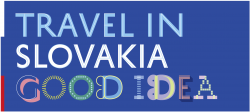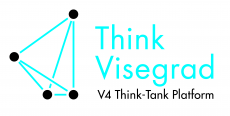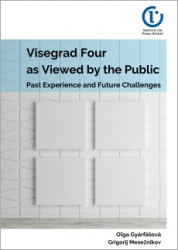This is the archival site of the former V4 portal. As of July 2024, it is no longer updated.
Visit visegrad.group for the current website.
Visit visegrad.group for the current website.

Thu 8 January 2026
Warszawa (PL)
4/2°C
| Tue | Wed | Thu | Fri | Sat |
|---|---|---|---|---|
| 1 | 3 | 5 | 6 | 8 |
Thu 8 January 2026
Praha (CZ)
6/2°C
| Tue | Wed | Thu | Fri | Sat |
|---|---|---|---|---|
| 6 | 5 | 8 | 8 | 9 |
Thu 8 January 2026
Bratislava (SK)
6/-1°C
| Tue | Wed | Thu | Fri | Sat |
|---|---|---|---|---|
| 8 | 6 | 7 | 8 | 8 |
Thu 8 January 2026
Budapest (HU)
5/-2°C
| Tue | Wed | Thu | Fri | Sat |
|---|---|---|---|---|
| 6 | 6 | 6 | 9 | 8 |
Snopko, Ladislav: A European Crossroads Worn by Centuries of Use
Roads between businesses. In order for them to work, for human communication to arise, people needed the freedom of movement and security. These were paths that had been trodden since before memory. At their crossroads lived people who ensured that they were passable. The countries of Central Europe are a European crossroads worn by centuries of use.
In the mid-1980s I led an archaeologic dig of the ancient Gerulata site near Bratislava. It was exciting work on the only part of modern-day Slovakia that had been part of the former Roman Empire. I remember cleaning off the remnants of a Roman floor tile from the third century AD. The tiles commemorated the over 200-year stay of the Kannanefat mounted troops who had guarded the Empire's northern border.
The work of an archaeologist, mostly on his digs, is often dictated by his desire to touch finds discovered in their original positions, their original "discovery situations". That's why I was cleaning off the Roman floor tile with my hands and touching its surface. Everyone knows the wonderful feeling of touching old artefacts worn by time. The worn floor tile that I was handling was about 1,700 years old and had been walked on by tens of thousands of feet that had shaped its surface. As if it contained the irreplaceable experiences of a human age. To put it another way, it contained the experiences born of the antipodes of complicated developments in which it had been vital to choose the path of understanding, even at the cost of many compromises. It contained also the experience of compassion for those who had been unwilling in the name of tolerance and humanity to compromise. It is an experience that we are still living today. It is our European experience. I have the same feeling when I climb an old flight of stairs to the tower of a Gothic church and I touch the worn wooden railings, or when I sit on their benches that bear the imprint of the ages. They are smooth, and in their smoothness I feel the softness as well as the hardness of the palms that touched them for centuries.
Whether it was at Gerulata that Slovakia began its European history, or in the smooth benches of a Gothic cathedral that this development continued, or today, in this pro-European age, when the world for many has shrunk to an Internet village, I always regard our authentic Central European differences as the basic life principle of the peoples of this region, and the avenue of their future development.
Central Europe, which includes the Czech Republic, Hungary, Poland, and Slovakia has always been a very complicated and conflict-ridden area, in which the borders of states changed so often that they created units of which the countries of today's V4 form an integral part. This multinational region thus gained an exceptional ethnic, cultural, and religious identity that was distinct from the rest of Europe. That's why it's understandable that in this new era these countries began to search for that unrepeatable Central European "unity in difference," and on 15 February, 1991 founded the "Visegrad unit", known as the V4. The main point of the V4 from the outset was cooperation in the pursuit of common aims within uniting Europe. It was an attempt to create a type of social consciousness, also respecting the other European states, which is familiar from other multinational regions like the Benelux or Scandinavia. After the principle of multinational cooperation within the V4 was fulfilled, the cooperation spread to a lower, but very important level - regional governments that create a rich mosaic of historic lands.
This last event occurred when all V4 countries had designated "higher territorial units" as their self-governing regions with representative organs. It was only a matter of time before an initiative was born for them to be mutually linked in the areas in which they had sovereign powers. This initiative arose during the working visit of a delegation of Polish culture officials to Slovakia, which had been organized by Professor Jacek Purchla, the director of the International Culture Institute in Kraków in June 2003. I have been friends with Professor Purchla since 1991. The delegation that visited Bratislava included Marshall Janusz Sepiol We agreed to change the programme of the visit, and on 9 June we organized a meeting between Marshall Sepioland the then-chairman of the Bratislava self-governing region, Lubo Roman. The meeting was marked by mutual understanding and led to a proposal to arrange the first meeting of V4 regional representatives.
On the basis of this proposal, the conference of the preparatory committee of the Forum of Regions of V4 Countries was called for 20 and 21 May, 2004 in Kraków, which was attended by the representatives of 10 self-governing regions of these countries, who expressed the will to cooperate in all the relevant areas. The most important areas of cooperation were identified as finding a common strategy for defending their interests among the states of the European Union, environmental policy, and investments in communications infrastructure. At the same time they agreed on a joint declaration calling for the first Forum of Regions of V4 Countries in October 2004.
The first official Forum of Regions of V4 Countries was held on 11 and 12 October, 2004 in Kraków. The representatives of more than 30 higher territorial units from Poland, Slovakia, Hungary and the Czech Republic officially declared their will to cooperate regularly. After it was over, the second Forum of Regions of V4 Countries was called for 26 and 27 September, 2005 in Bratislava. As the main topic of debate the delegates chose the development of V4 regions following their entry to the EU, cooperation between V4 regional representatives in the EU's Council of Regions, questions related to the admission of new members to the EU, and cooperation within the area of culture, education and environmental protection. Cooperation between the V4 countries thus acquired a further, very viable dimension, because the best path to mutual closeness leads from high up to down below, from states through regional self-governments to citizens.
Ladislav Snopko
Archaeologist, playwright and publicist. Former Minister of Culture of Slovakia (1990-1992) and Slovak representative and coordinator of culture, education, sport and tourism for Central European Initiative. Founder of the cultural foundation Pro Slovakia in 1992. Currently serves as member of local parliament in Bratislava.







